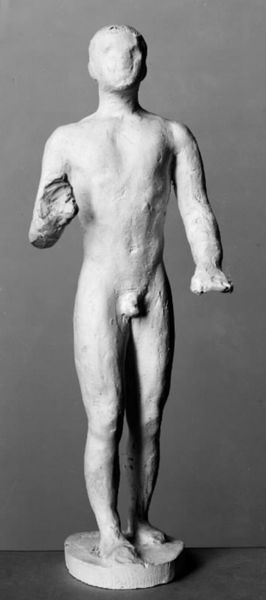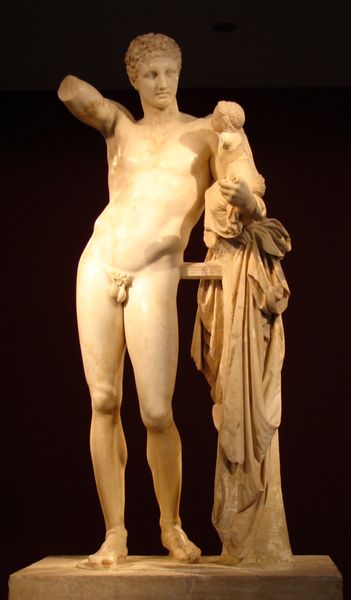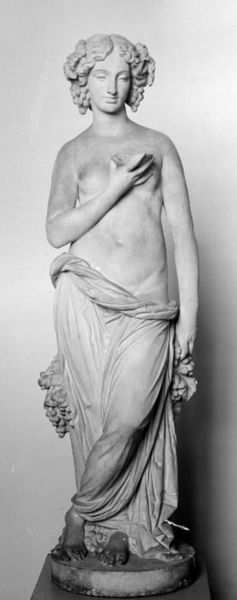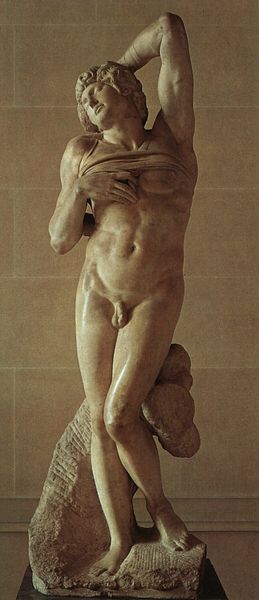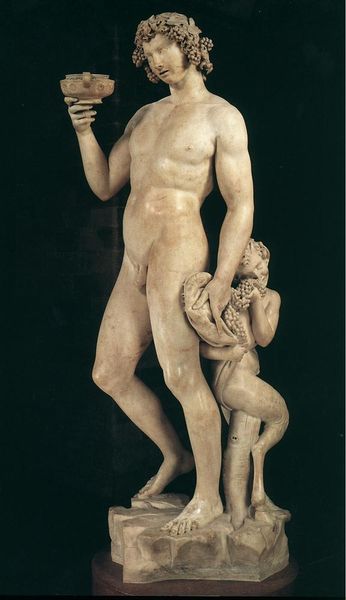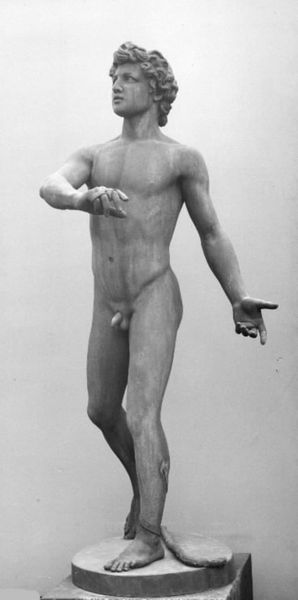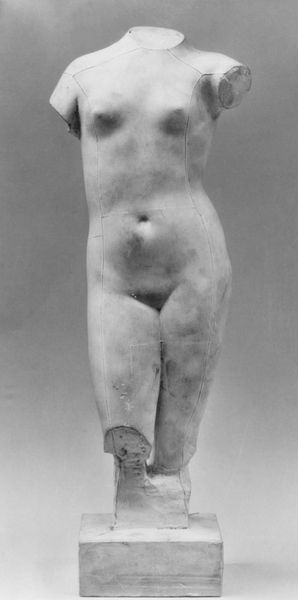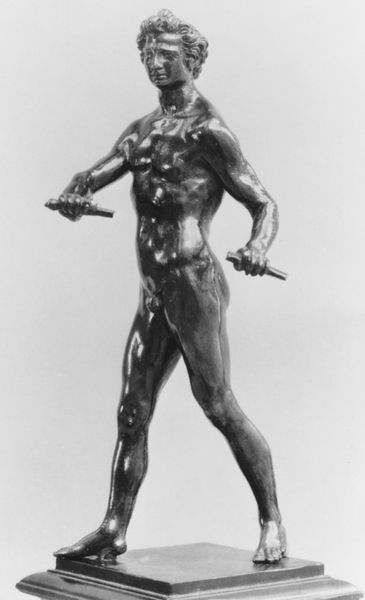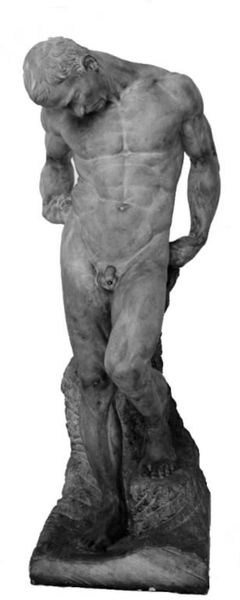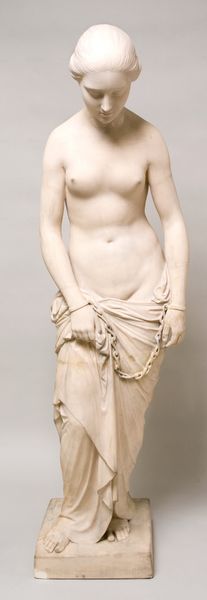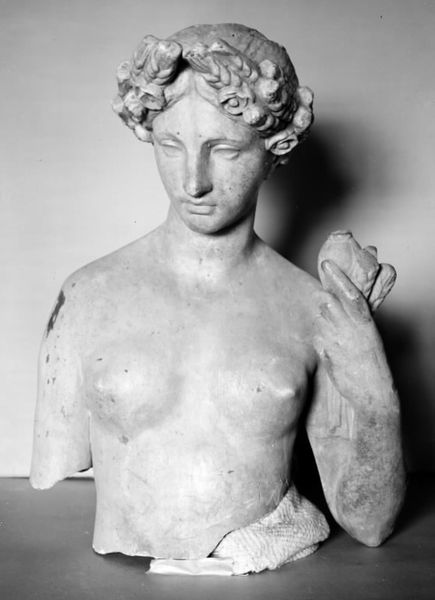
sculpture, marble
#
portrait
#
neoclacissism
#
sculpture
#
greek-and-roman-art
#
figuration
#
sculpture
#
black and white
#
marble
#
nude
Dimensions: 215.5 cm (height) (Netto)
Curator: This arresting sculpture, "Merkur," was completed in 1821 by Hermann Ernst Freund. Fashioned from marble, it's a compelling example of Neoclassical sculpture currently residing at the SMK in Copenhagen. Editor: It exudes a sort of quiet resignation, wouldn’t you agree? His gaze is lowered, and there is an air of restraint that subverts the very idea of the 'messenger' deity. It makes me think about what voices aren't represented by history. Curator: His contrapposto stance lends dynamism to the piece, while the polished marble skin exudes an almost luminous surface texture that draws one's eye. Note also the precision in the carving of the caduceus and winged petasos - true signifiers of his station and tools of his office. The lines here speak to a sophisticated understanding of form and proportion. Editor: While those objects might act as clear signifiers, I am prompted to wonder: to what extent does this work reflect early 19th-century European cultural fixations on the male nude? Or even more complex questions related to empire. It's impossible to look at this object and not wonder about Freund's own context. Curator: These aspects don't negate its skillful rendition of classical ideals, but provide other perspectives of understanding, or additional analytical coordinates, if you will. Observe his slender build and smooth, uninterrupted contours. A powerful emblem of restrained heroism. The emphasis on pure form, and simplified anatomy adheres strongly to Winckelmann’s notion of "noble simplicity and quiet grandeur.” Editor: Restrained perhaps because the actual bodies represented here often contrast against those depicted in idealized art? This contrast makes me ask whose 'ideals' were amplified during Neoclassicism, and what bodies are marginalized or erased by them. What social norms did this perpetuate and naturalize? Curator: That tension is evident, providing us with additional layers to understand his rendering, and adding critical weight to what we see—formally speaking—in front of us. Editor: Absolutely, and thank you for that reading. I'm struck by how viewing "Merkur" with the full complexity of that era helps uncover many nuanced tensions that we can unpack even today.
Comments
No comments
Be the first to comment and join the conversation on the ultimate creative platform.
